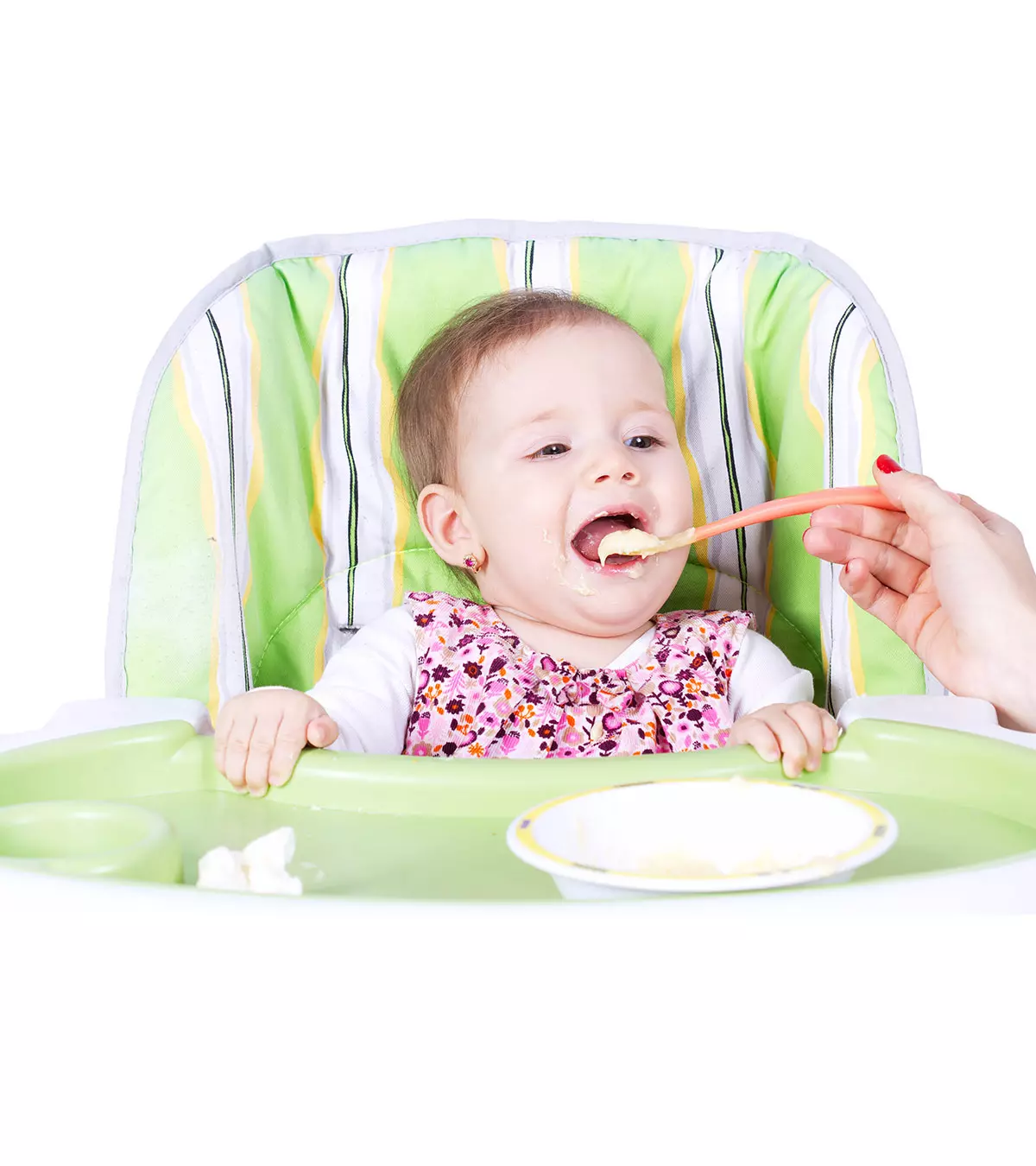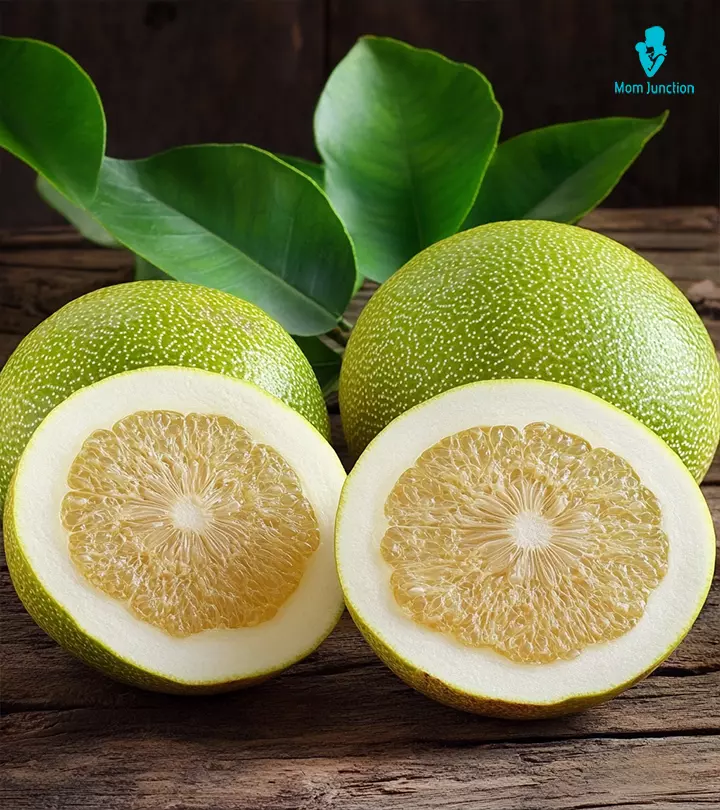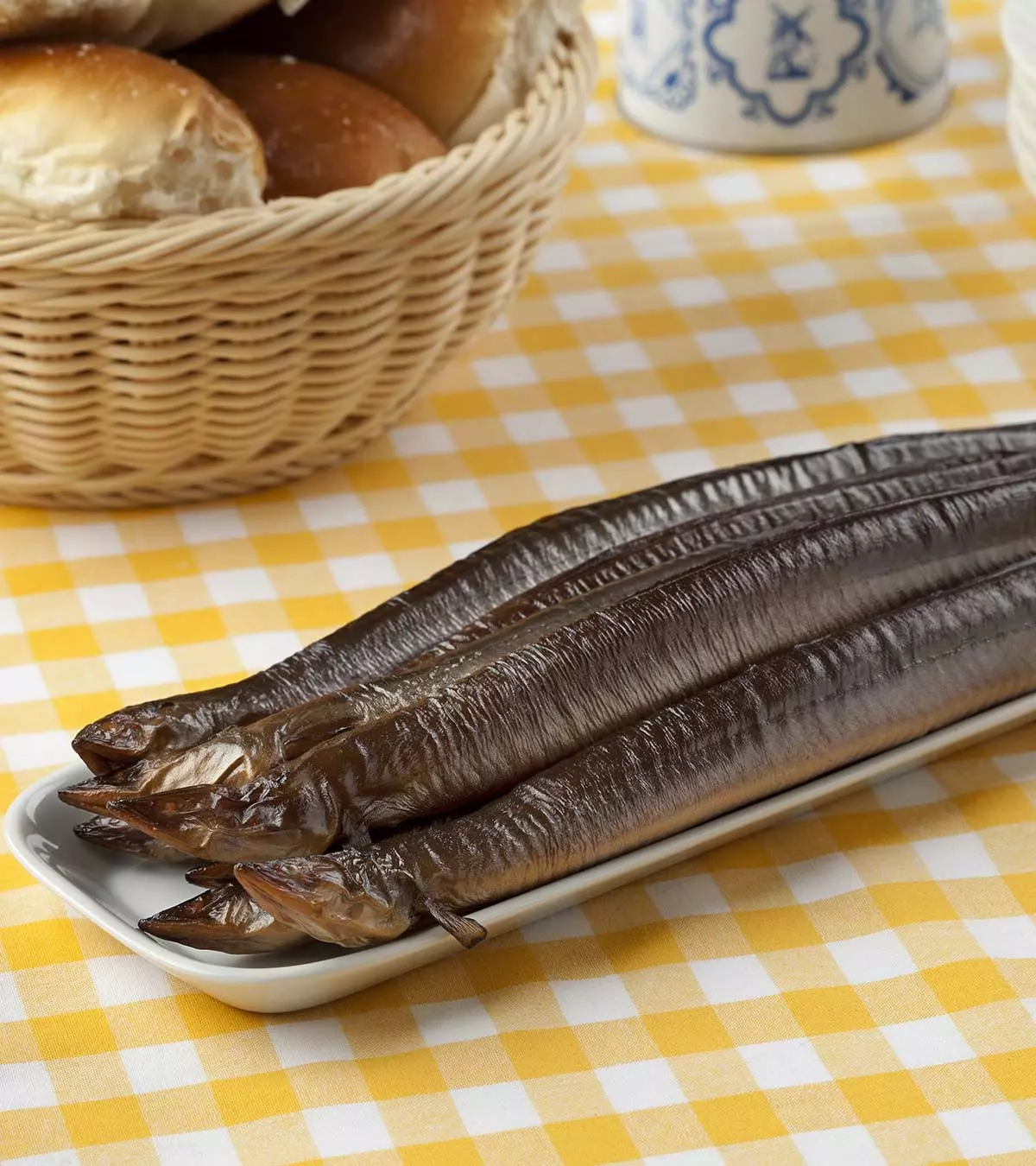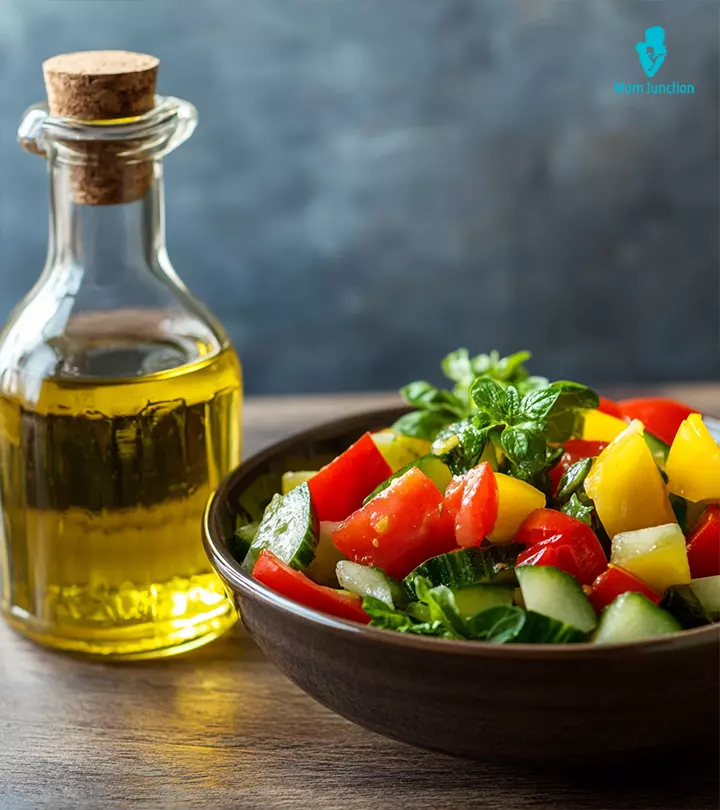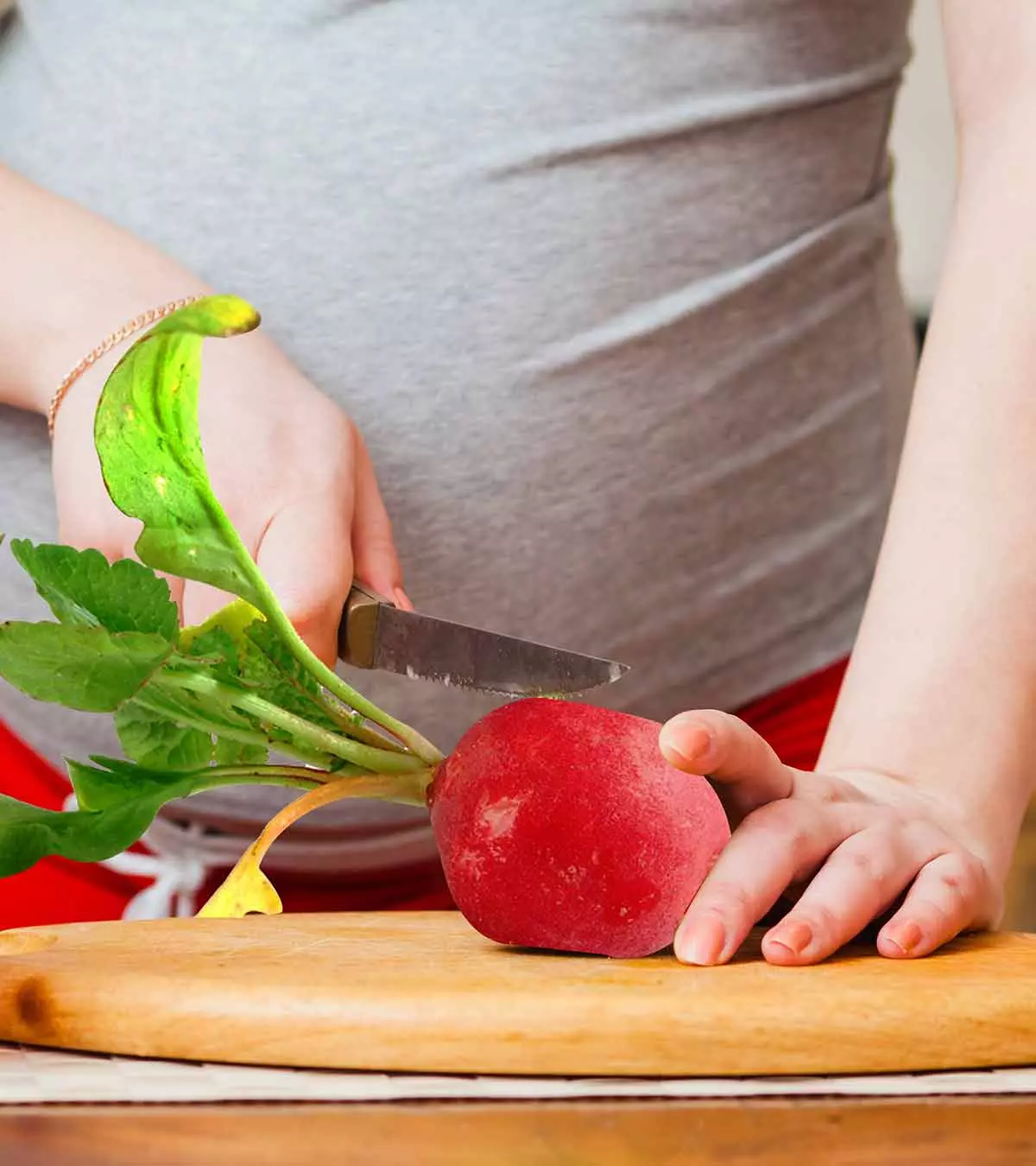
Image: Midjourney/ MomJunction Design Team
Cerelac baby food is a popular instant cereal produced by Nestle. It is developed for various age groups depending on the nutritional needs of that particular age group. However, the manufacturer advises that Cerelac must be used for babies above six months of age when the mother’s milk alone is not enough to provide the necessary nutrition for the growth and development of the child. When introduced initially, Cerelac must be used by mixing it in breastmilk or formula milk. Read this post to learn more about the different types, advantages, and drawbacks of Cerelac, and recipes to make Cerelac at home for babies.

Key Pointers
- The manufacturer recommends using Cerelac for babies above six months old when breast milk is insufficient.
- During the complementary feeding period, infant cereals are one of the initial foods introduced to the baby.
- Early introduction of cerelac poses risks including choking, digestive issues, disturbed gut microbiota, overfeeding, and allergies
- Cerelac is readily accessible, convenient for travel, easy to prepare, preservative-free, and gentle on the baby’s digestive system.
Types of Cerelac
Cerelac comes in a wide range of instant cereals for babies, and are marketed as different Cerelac stages. These are formulated based on the age of the baby:
- Stage 1 (six months onwards): Formulated for babies who are six months old, it is available in three basic variants – Cerelac Wheat, Rice, and Maize. Any of these variants can be given to the baby as a first food or weaning food. These cereals are gelatin-free and are easy to digest. Stage 1 Cerelac is also ideal for a 7-month-old baby.
- Stage 2 (eight months onwards): It is available in two variants – Banana and Honey.
- Stage 3 (ten months onwards): This version contains real fruit pieces of different textures and tastes for babies who have developed the ability to chew.
- Stage 4 (12 to 18 months): The babies are now ready to try the food the family is eating and hence can be presented with a wide array of choices. Within this range, Cerelac offers various combinations of multigrain cereals with other food groups, such as multigrain and fruits, multigrain and pulse, and multigrain and vegetables.
- Stage 5 (18 to 24 months): At this stage, the product contains fruits in textured shapes as the babies can now chew the food given to them.
Note:
It is not a dairy-free food as almost all varieties of cerelac contain skimmed milk as an ingredient. If the child is lactose-intolerant, consult your pediatrician regarding this. Several variants of Cerelac contain wheat flour as their main ingredient and hence are not gluten-free food. If your baby is allergic to wheat or has gluten allergy, then talk to their doctor before feeding wheat variants.
 Did you know?
Did you know?When Can Babies Start Eating Cerelac?

The WHO recommends exclusive breastfeeding for the first six months of an infant’s life. The American Academy of Pediatrics (AAP) recommends the introduction of solid foods during 4 to 6 months of age (1).
The gag reflex, which prevents choking in babies, begins to decline by five months (2). However, if you wish to start solids, under the guidance advice of a pediatrician, you may start feeding solids before the age of six months provided the following markers of development are met (3):
- The baby can hold the neck straight without support and has reasonable neck control.
- The baby can sit with little or no support.
- The baby opens the mouth voluntarily and leans forward to take food.
If your baby shows signs of readiness, do not hesitate to consult a pediatrician and start complementary foods like Cerelac earlier than six months but not before four months.
But remember, when introducing Cerelac or other weaning foods to your baby, it’s important to be aware of any potential food allergies. It’s also important to introduce new foods gradually, one at a time, so you can monitor your baby’s reaction to each food.
Even after you introduce solid foods, you should continue breastfeeding beyond one year and more.
Why You Should Not Feed Cerelac Too Early
You can decide the right time to start solids under pediatric guidance. But it is best to avoid starting solids before four months of age due to the following reasons (4):
- There is a risk of choking since the gag reflex is still underdeveloped.
- Introducing complementary food early reduces the frequency of breastfeeding. This may lead to low iron stores in infants since the high bio-available iron in breastmilk is replaced by added iron of complementary feed (5).
- Digestive issues might crop up as the baby’s digestive system is still developing.
- Disturbance of gut microbiota may cause some health issues.
- It might result in overfeeding, which could lead to excessive weight gain. Jesse Feder, a dietitian from North Miami Beach, Florida, says, “Cerelac may cause constipation when not mixed correctly or when overfed.”
- There is a risk of allergies since the immune system is still under-developed.
It is important to consider early childhood nutrition when planning to introduce solid foods to infants because the changes in the infant’s gut microbiota at an early age may have implications throughout childhood and adulthood.
If Cerelac is introduced at the right time, it could have some advantages.
Advantages Of Cerelac
As a parent, one may be concerned if Cerelac is good for babies. It is an instant or ready-to-eat baby food developed to support the growing nutritional needs of a baby. Parents and caregivers buy it for the following reasons:
- Easy availability
- Instant preparation
- Travel-friendly
- Free from preservatives, added colors, and flavors
- But most importantly, its semi-solid texture, just like porridge, is easy for a baby to swallow. Also, its basic ingredients like rice are easy on the baby’s digestive system, which is still immature.
- Nutritionally, it has been made to be as nutrient-rich and wholesome as possible. It has 18 essential nutrients and the probiotic Bifidus BL, which supports the baby’s natural defenses by boosting immunity. It also has protein, Omega-3 (EPA & DHA) and omega-6, vitamins A and E, folic acid, vitamins B6 and B12, among others
 Research finds
Research findsWith these prime benefits, Cerelac has made its place in the baby’s meal platter for years. But is Cerelac so perfect that we may depend on it right away? Well, everything has its pros and cons, and so does Cerelac.
Drawbacks Of Cerelac
Cerelac is a nutritious food, but it still comes with a few drawbacks.
- It has fruit juice concentrate that may not be a healthy addition to infant food. Fruit juice concentrates are made by minimizing the quantity of water in fruit juice, thus concentrating the juice. This process may lead to the loss of water-soluble vitamins and minerals. Hence, adding fresh fruits is a better option (6).
- Kids who are offered only cerelac and not homemade food might develop aversions to home food, which can negatively impact their healthy eating habits.
- Gluten and lactose in Cerelac can be missed and may lead to allergic reactions.
The variants available for babies of eight months and above contain glucose syrup and maltodextrin, which are a form of sugar. This addition has no significant value since the baby already gets adequate sugar from other ingredients in Cerelac. The inclusion of glucose syrup and maltodextrin could lead to an increased sugar intake. The high sugar intake by infants may lead to health issues such as childhood obesity, and tooth decay (7) (8).
How To Feed Cerelac For The First Time?
Feeding your baby something other than breastmilk (or formula) for the first time can be an overwhelming experience, especially for first-time parents. These tips and tricks could be handy (9).
- Never start feeding at a time when your baby is tired or cranky.
- Be calm and relaxed. Your baby should be comfortable when you feed.
- Make the feeding environment warm, friendly, and flexible because setting any feeding rules so early is of no use.
- Ensure that the infant is sitting comfortably in an upright position with little or no support.
- Make sure your baby is not too hungry when you start feeding.
- Be patient. Your baby may take only a spoonful at first, but this will increase with time and practice.
- Be prepared for a mess; all babies will do it until they learn the art of eating.

- Stay alert while you feed your baby to avoid accidents such as choking.
- Introduce one new food at a time. Keep a 3-5 day gap before you start any new food.
- Feed foods with a small spoon. You may buy an infant-sized spoon for the purpose.
- Place the spoon near your baby’s lips.
- If your baby refuses the first time, try again the next day.
How To Prepare Cerelac For Babies?

Carefully read the instructions given on the packet. The quantity of Cerelac could change depending on the variant.
Here are the general instructions for preparing Cerelac:
- Wash your hands before preparing the baby food. Ensure that the utensils are thoroughly cleaned and preferably sanitized.
- Boil clean drinking water for five minutes and then let it come to room temperature before you start preparing the feed.
- Measure the amount of water and Cerelac as directed on the pack. Always use the scoop provided in the box. Level the scoop to ensure the amount is as exact as mentioned on the box.
- Do not use more powder than directed.
- Add water while stirring continuously. Mix well and ensure no lumps are formed.
- Feed immediately or within 30 minutes; otherwise, there could be bacterial deterioration. Discard the unused feed.
Michelle Martinez, a mother to one, shares how she makes Cerelac more interesting for her little one, “I serve Cerelac once or sometimes twice a day. For breakfast, I mix Cerelac wheat and mango-orange with yogurt flavor to pancake mix. For an afternoon snack, I pair wheat banana & milk flavored Cerelac with carrot sticks or grapes (i).”
If you do not want to use any packaged infant food, then you may try making it at home.
Is Homemade Cereal Food Better Than Cerelac?
Homemade cereal food is a combination of cereals/grains with pulses. Its nutritional profile makes it suitable for babies and adults as well. Below are some of the pros and cons of the homemade powder vis-à-vis Cerelac.
- The combination of ingredients is customizable. This is important, especially if there are any complaints of food allergy or food intolerance in the baby. You can have fewer grains when it is being made for a four-month-old than when made for an eight-month-old baby.
- You can have a wide assortment of grains and pulses so that the baby gets all the essential macro and micronutrients.
- You may add sprouted grains and pulses to increase the overall nutritional profile of the feed. Sprouting boosts the bioavailability of nutrients to the baby (10) (11).
- Fresh fruits and vegetables may be added as per the recipe. It can be a healthier alternative to the fruit and vegetable juice concentrate found in Cerelac.
- However, preparing the powder is time consuming, especially if you are in a rush.
- It needs to be prepared and stored in a clean, preferably sanitized, environment in the kitchen. If not, it could pose a risk of germs and infection to your baby.
- You may not know the values of each nutrient that you are feeding the baby.
To minimize the risk of allergies or intolerances, introduce only 1-2 teaspoons of homemade ‘Cerelac’ to the baby. Wait and check for any allergic reactions. If you see any allergic reactions, then stop feeding it.
Keep reading to learn how you can prepare homemade cereal powder for your little one.
How To Make Cereal Powder at Home?
We provide two versions of the recipe, one for babies who are four months old but prepared for solids. Another recipe is for babies who are six months old and can be fed solids. These are the traditional recipes used in various Asian cultures.
1. Homemade ‘Cerelac’ (4-6 months)
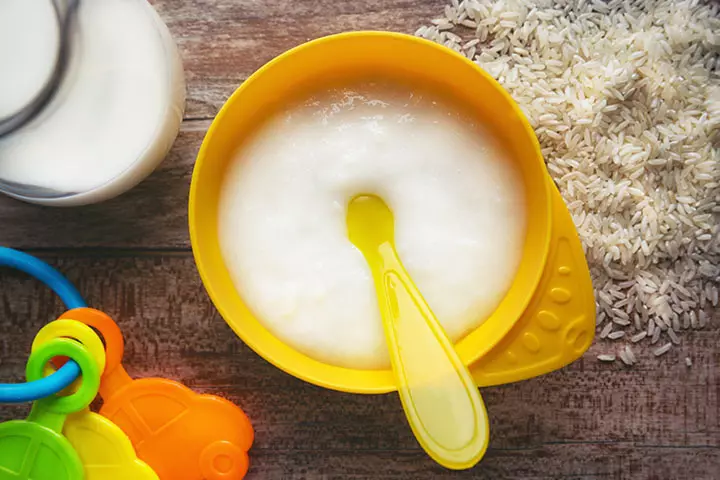
You may begin with a single-grain version. Rice is an ideal first food since it is hypoallergenic and easy to digest. The grain is widely recommended by pediatricians (12).
You will need:
1 cup organic rice
How to prepare:
- Take a cup of rice and wash it thoroughly.
- Drain the water and spread the rice on a clean cotton or muslin cloth. Let it dry for an hour or so.
- Once the rice gets dried well, start with roasting.
- For roasting, put a small pan on medium heat. Once the pan is heated, dry-roast the rice in it on a medium flame for 5-7 minutes. Keep stirring the rice.
- The rice gives out an aroma, starts fluttering and turns light brown. As this happens, turn off the heat and let the rice cool.
- Once the rice cools down, transfer it to a clean grinder. Grind the rice for two minutes or for the desired time to turn it into a fine powder.
- Sift the powder to remove any coarse rice granules.
- Store the sifted powder in an air-tight container and place in the refrigerator to store.
- To feed the baby, take one tablespoon of rice cereal, and mix it with half a cup of water. Stir continuously to prevent the formation of lumps.
- Transfer this mix to a pan. Keep the pan on the flame at medium heat. Stir the mixture continuously till it starts simmering. Let it simmer for 2-3 minutes.
- Let the mix cool down a bit to become lukewarm. Transfer it to a serving dish and feed it to your baby.
NOTE:
Mix it with some milk or formula for added taste. Adjust the consistency by adding water or milk. Once your baby is comfortable with this, you can start adding fruit and vegetable purees to this recipe.
It is only when the baby is comfortable with single-grain recipes, introduce multi-ingredient recipes. One such multi-ingredient recipe is shared below.
2. Homemade ‘Cerelac’ recipe (6 months and above)
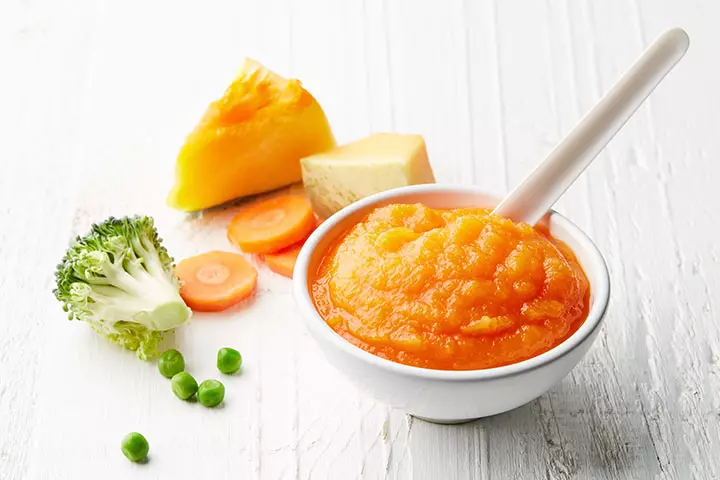
This recipe is nutritionally-balanced and has all the basic ingredients that could be found on your kitchen shelf.
You will need:
Cereals
- 1.5 cup white/brown rice
- 1 cup broken wheat
- 1/2 cup sago
- 1/2 cup corn
Grains
- 1 cup finger millet flour (ragi)
Pulses/ legumes
- 1 cup roasted whole green gram
- 1 cup roasted gram
- 1 cup split red gram
- 1 cup split yellow dal
- 1/2 cup horse gram
Nuts and condiments
- 1/2 cup almonds
- 1/2 cup cashew
- 10 pods cardamom
How to prepare:
- Once the ingredients are all sorted, soak them separately in water for about 10 minutes.
- Rinse and dry the ingredients on plain cotton or muslin cloth.
- Once they completely dry, dry-roast all the ingredients until they turn light brown and start giving a distinct aroma. Points to remember while roasting:
- Roast rice until it gets a little puffed and slightly golden.
- Pulses until they get golden in color and crisp in texture.
- Corn should start fluttering.
- Sago should get dry and crisp.
- Broken wheat until it turns light golden.
- Ragi until it gives a distinct aroma.
- Almond and cashews until they are golden brown and cardamon until it gives aroma.
- Let all the roasted ingredients cool down. Then, put them in a blender and make a fine powder. Make sure that there are no granules or fine pieces of grains/ pulses left.
- Sift the powder in case you feel that granules or fine grain pieces could be there in the powder.
- Store the powder in an air-tight container. It can be kept for 4-6 months in a refrigerator.
- Now, whenever you have to make the porridge, follow these steps:
- Take 2 tablespoons of the homemade Cerelac powder in a clean, sanitized bowl. Make sure that the bowl is dry.
- Add one cup of boiled and cooled water to the powder.
- Mix the powder and water well so that no lumps are formed.
- Transfer this mixture to a pan and keep the pan on a flame of medium heat.
- The mixture will take approximately ten minutes to turn into a thick texture.
- Switch off the flame and let the mixture cool.
- Once the mixture comes to room temperature, feed it to your baby with added fruit or vegetable puree.
- You can add more water to the mix if it becomes too thick. Add more powder if the preparation becomes runny. However, do it while you are still cooking the mixture.
Note: It is always advisable to use the powder as early as possible.
Frequently Asked Questions
1. How many times a day can Cerelac be given?
The number of times Cerelac may be given to babies depends on their age. Starting at six months, you may give Cerelac twice a day and then gradually increase it.
2. Can I give Cerelac to babies at night?
Yes, Cerelac may be given to babies at night for a wholesome meal that will keep them satisfied for a couple of hours. However, avoid overfeeding them at night to ensure they sleep comfortably.
3. Is it good to feed cerelac to babies?
Cerelac contains essential nutrients, such as zinc, iron, and vitamin C, that can support a baby’s growth and development. However, it shouldn’t be the sole source of nourishment for the baby. Feeding babies Cerelac with a well-balanced weaning diet is the appropriate approach to meet your baby’s growing nutritional needs.
4. Does cerelac make babies chubby?
Feder opines, “Cerelac will increase baby weight at a healthy rate.”
Cerelac can provide babies with nutrients that can help in their weight gain. However, the product is not a weight gain supplement. Remember, excessive consumption of any food, including Cerelac, can lead to weight gain if the baby is consuming excess calories than they need.
5. Can I mix Cerelac with formula milk?
“You can mix Cerelac with formula milk. However, keep in mind that Cerelac is enough nutrition for the baby and does not necessarily need the extra formula milk,” suggests Feder.
6. What should I do if my baby refuses Cerelac?
If your baby refuses Cerelac, try different flavors or mix it with their usual milk to make it more familiar. You can also combine it with pureed fruits, vegetables, or breakfast foods like pancakes. Offer it consistently in small amounts and adjust the texture to their preference. If the refusal continues, consult a pediatrician to check for underlying issues or to discuss healthy alternatives.
Most parents have used Cerelac baby food around the world for a long time. The variety and ease of use make this instant food a popular choice among foods for babies. In addition, it is available in stages designed as per a baby’s age ranging from six to twenty-four months. Although Cerelac is packed with several vital nutrients and probiotics for infants, it comes with certain disadvantages and risks of allergies. Therefore, it is best to consult your baby’s pediatrician before introducing Cerelac to your baby.
Infographic: Possible Benefits And Risks Of Cerelac For Babies
Introducing Cerelac as part of your baby’s diet can be a convenient and nutritious option. Just remember to follow the instructions on the package and consult with your pediatrician. However, sometimes, Cerelac can also be harmful to babies. Check out the infographic below to learn some potential advantages and disadvantages of Cerelac for babies.
Some thing wrong with infographic shortcode. please verify shortcode syntax
Illustration: Cerelac Baby Food: Stages When To Start And How To Feed

Image: Dall·E/MomJunction Design Team
Personal Experience: Source
MomJunction articles include first-hand experiences to provide you with better insights through real-life narratives. Here are the sources of personal accounts referenced in this article.
i. Different ways to serve Cerelac; A #parentingnerd tiphttps://parentingnerd.blogspot.com/2014/11/different-ways-to-serve-cerelac.html
References
- American Academy of Pediatrics Recommendations for Complementary Feeding; American Academy of Pediatrics
https://pediatrics.aappublications.org/content/106/supplement_4/1274.1 - Developmental Stages In Infant And Toddler Feeding; Infant toddler forum.
https://infantandtoddlerforum.org/media/upload/pdf-downloads/3.5_Developmental_Stages_in_Infant_and_Toddler_Feeding_NEW.pdf - When, What, and How to Introduce Solid Foods; U.S. Food and Drug Administration
https://www.cdc.gov/infant-toddler-nutrition/foods-and-drinks/when-what-and-how-to-introduce-solid-foods.html?CDC_AAref_Val=https://www.cdc.gov/nutrition/infantandtoddlernutrition/foods-and-drinks/when-to-introduce-solid-foods.html - Weaning of infants; BMJ
https://adc.bmj.com/content/88/6/488 - A.A. Kuo et al., Introduction of Solid Food to Young Infants; National Center for Biotechnology Information
https://www.ncbi.nlm.nih.gov/pmc/articles/PMC3195680/ - Where We Stand: Fruit Juice; American Academy of Pediatrics
https://www.healthychildren.org/English/healthy-living/nutrition/Pages/Where-We-Stand-Fruit-Juice.aspx - Policy on Dietary Recommendations for Infants, Children, and Adolescents; AAPD
https://www.aapd.org/media/policies_guidelines/p_recdietary.pdf - How to Reduce Added Sugar in Your Child’s Diet: AAP Tips; American Academy of Pediatrics
https://www.healthychildren.org/English/healthy-living/nutrition/Pages/How-to-Reduce-Added-Sugar-in-Your-Childs-Diet.aspx - Eating tips for babies; State Government of Victoria, Australia
https://www.betterhealth.vic.gov.au/health/healthyliving/eating-tips-for-babies - Chavan JK and Kadam SS, Nutritional improvement of cereals by sprouting; National Center for Biotechnology Information
https://www.ncbi.nlm.nih.gov/pubmed/2692609 - R.S. Gibson et al., Improving the bioavailability of nutrients in plant foods at the household level, Cambridge University
https://www.cambridge.org/core/journals/proceedings-of-the-nutrition-society/article/improving-the-bioavailability-of-nutrients-in-plant-foods-at-the-household-level/D1CC8CA0E2F3990871A5C7912619B8D7 - Starting Solid Foods; American Academy of Pediatrics
https://www.healthychildren.org/English/ages-stages/baby/feeding-nutrition/Pages/Starting-Solid-Foods.aspx - Michelle Klerks et al.; Infant Cereals: Current Status, Challenges, and Future Opportunities for Whole Grains.
https://www.ncbi.nlm.nih.gov/pmc/articles/PMC6412837/ - Mary E Van Elswyk et al.; Iron-Rich Complementary Foods: Imperative for All Infants.
https://www.ncbi.nlm.nih.gov/pmc/articles/PMC8546153/
Community Experiences
Join the conversation and become a part of our nurturing community! Share your stories, experiences, and insights to connect with fellow parents.
Read full bio of Dr. Charu Kalra
- Jesse Feder did his Bachelor of Science in Applied Physiology and Kinesiology with a specialty in Exercises Physiology from the University of Florida. A certified personal trainer by the American College of Sports Medicine (ACSM-CPT) and a Certified Strength and Conditioning Specialist by the National Strength and Conditioning Association (NSCA-CSCS), he has seven years of experience in training people and providing nutrition guidance. Jesse holds a masters degree in Dietetics and Nutrition from Florida International University and is a Licensed and Registered Dietitian (LDN/RDN).
 Jesse Feder did his Bachelor of Science in Applied Physiology and Kinesiology with a specialty in Exercises Physiology from the University of Florida. A certified personal trainer by the American College of Sports Medicine (ACSM-CPT) and a Certified Strength and Conditioning Specialist by the National Strength and Conditioning Association (NSCA-CSCS), he has seven years of experience in training people and providing nutrition guidance. Jesse holds a masters degree in Dietetics and Nutrition from Florida International University and is a Licensed and Registered Dietitian (LDN/RDN).
Jesse Feder did his Bachelor of Science in Applied Physiology and Kinesiology with a specialty in Exercises Physiology from the University of Florida. A certified personal trainer by the American College of Sports Medicine (ACSM-CPT) and a Certified Strength and Conditioning Specialist by the National Strength and Conditioning Association (NSCA-CSCS), he has seven years of experience in training people and providing nutrition guidance. Jesse holds a masters degree in Dietetics and Nutrition from Florida International University and is a Licensed and Registered Dietitian (LDN/RDN).
Read full bio of Swati Patwal
Read full bio of Rohit Garoo
Read full bio of Anindita Ghatak






